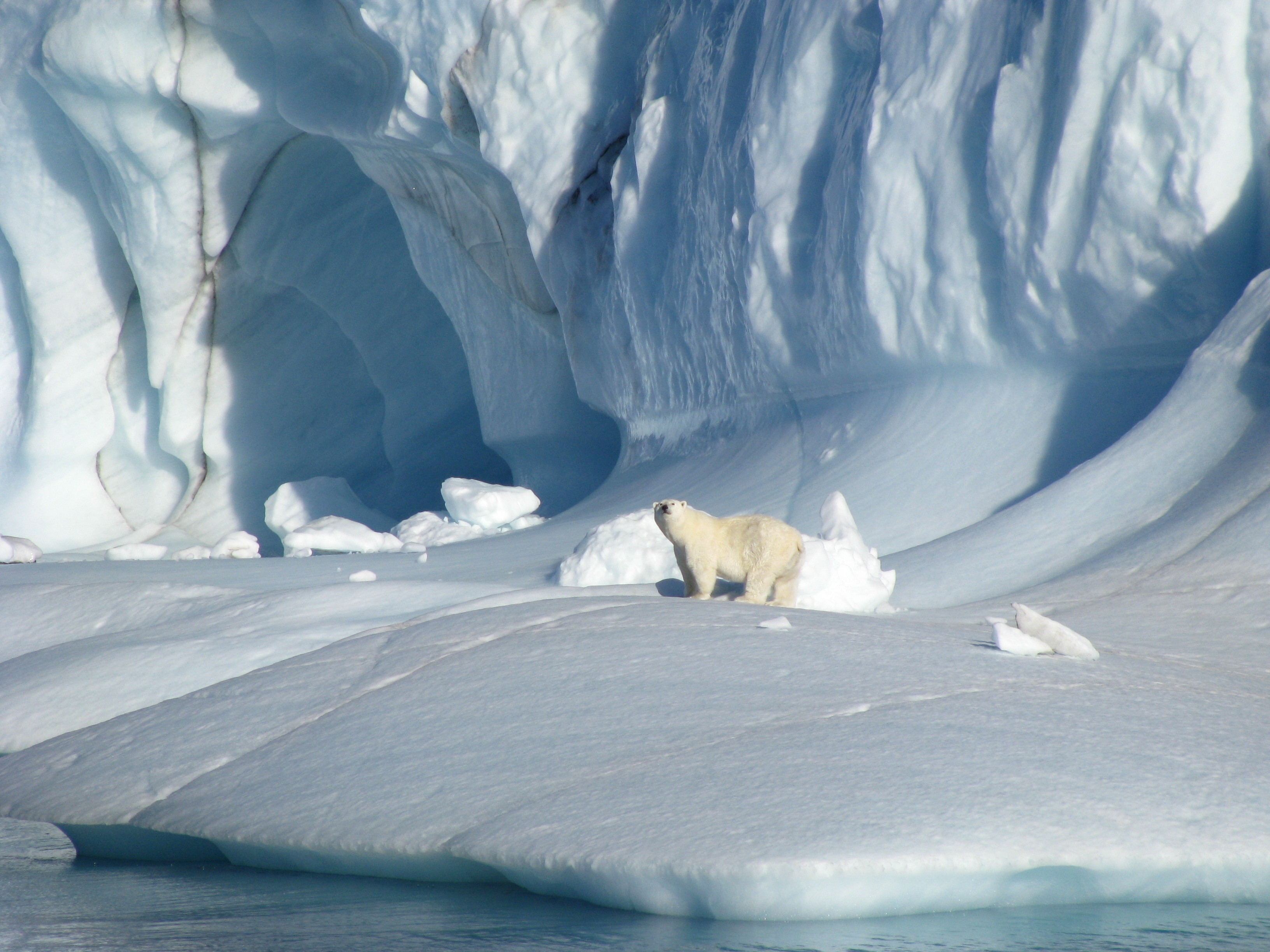In 2008 I visited Isabella Bay, Nunavut, a renowned sanctuary for whales. On a sparkling Arctic day, I wrote, “I noticed that there were at least eight whales moving around the bay… We watched [them]… until we heard over the radio that a polar bear had been spotted on shore… Seeing these age-old ambassadors of the North, it struck me just how vast and truly imperative the Arctic is.”
Five years later, at the COP19 climate negotiations in Poland, I was struck by the dizzying interconnectedness of climate, economy, and justice. Like many small coastal and island states, the Arctic is not a major emitter, but its geography and ecology render it especially vulnerable to climate change. Covered in ice and snow, the Arctic has a high level of albedo, or reflecting power. As snow and ice melt to expose bare rock and water, the Earth absorbs more of the sun’s energy. Rising temperatures cause even more snow and ice to melt in a positive feeback loop called the Albedo Effect. Moreover, Northern communities are financially unable to implement costly mitigation and adaptation measures to combat climate change.
In the South, recent We Are Winter and We The North campaigns evoke in Canadians the feeling of being uniquely Northern; many Canadians have proudly, at one time or another, considered themselves Northern ambassadors. However, reflecting on my visit to Qikiqtarjuaq, a community of just over 500 on the coast of Baffin Island, I am reminded that I understand but an inkling of what life in the real North truly is. Many of us have heard about melting Arctic ice, but what are the actual implications of climate change in the Arctic?
In his December 2012 report, then-UN Special Rapporteur on the right to food Olivier De Schutter points to the findings of the 2007-2008 Inuit Health Survey, which found that 70 percent of adults living in Nunavut faced food insecurity, a figure six times higher than the Canadian national average. Moreover, Northern Canada boasts the highest documented rate of food insecurity for an indigenous population in a developed country.
Hunting becomes more dangerous each year as climate change causes ice formation and break-up to be increasingly erratic. An increased sense of risk surrounding traditional subsistence activities discourages people in the North, particularly youth, from participating. In this way, climate change has weakened the food-sharing tradition. To combat food insecurity the Canadian government launched Nutrition North Canada (NCC) in April 2011. Under the program, subsidies are transferred to retailers in the North to apply to selected items. Many critics, including De Schutter and the Feeding My Family community, have pointed to the fact that without adequate oversight, it is unclear whether retailers pass on appropriate subsidies to consumers.
In addition to its effects on the reliability of ice and, by extension, food security, the warming climate is causing permafrost to melt more year by year. Permafrost underlies 40 to 50 percent of Canada and almost one quarter of the earth; thawing permafrost will wreak havoc on infrastructure in the North, while also releasing vast quantities of methane gas and other organic materials into the atmosphere. The United Nations Environment Programme reports that permafrost contains 1,700 gigatonnes of carbon, twice the amount currently in the atmosphere.
Melting permafrost will impact the already poor availability and quality of housing in the North. Close to 40 percent of Inuit in Nunavut live in crowded homes, a situation that is likely to worsen as permafrost thaws more extensively each summer. The availability, quality, and affordability of housing also affect the education of young Inuit. A 2012 report focusing on Nunavik finds that overcrowded homes are “detrimental to a child’s capacity to concentrate in school and to develop good study habits in the home.” The housing shortage in Nunavut can be conceived as a significant contributing factor in food insecurity as sky-high rent diverts money away from food purchases. In a trickle down effect, melting permafrost caused by climate change impedes the achievement of food security in Inuit communities.
In the context of this month’s international climate negotiations, climate change in the Arctic is already exacting far-reaching consequences in places like Kiribati, an island nation that purchased land 2000 kilometers away in anticipation of gradual submersion by rising seas. For these reasons, as my colleague Megan wrote yesterday, climate change in the Arctic must be understood as a moral issue, inextricably linked to global inequities and human rights.
Canada is now confronted with both challenge and opportunity in the Arctic, a region comprising 40% of our landmass. By implementing policies that grow the Northern economy in culturally and ecologically sensitive ways, Canada can forge a sustainable future for people from Nunavut to Kiribati. First and foremost, Canada must acknowledge and act upon the responsibility it bears in the global pursuit of sustainability in view of its significant emissions and financial resources.



